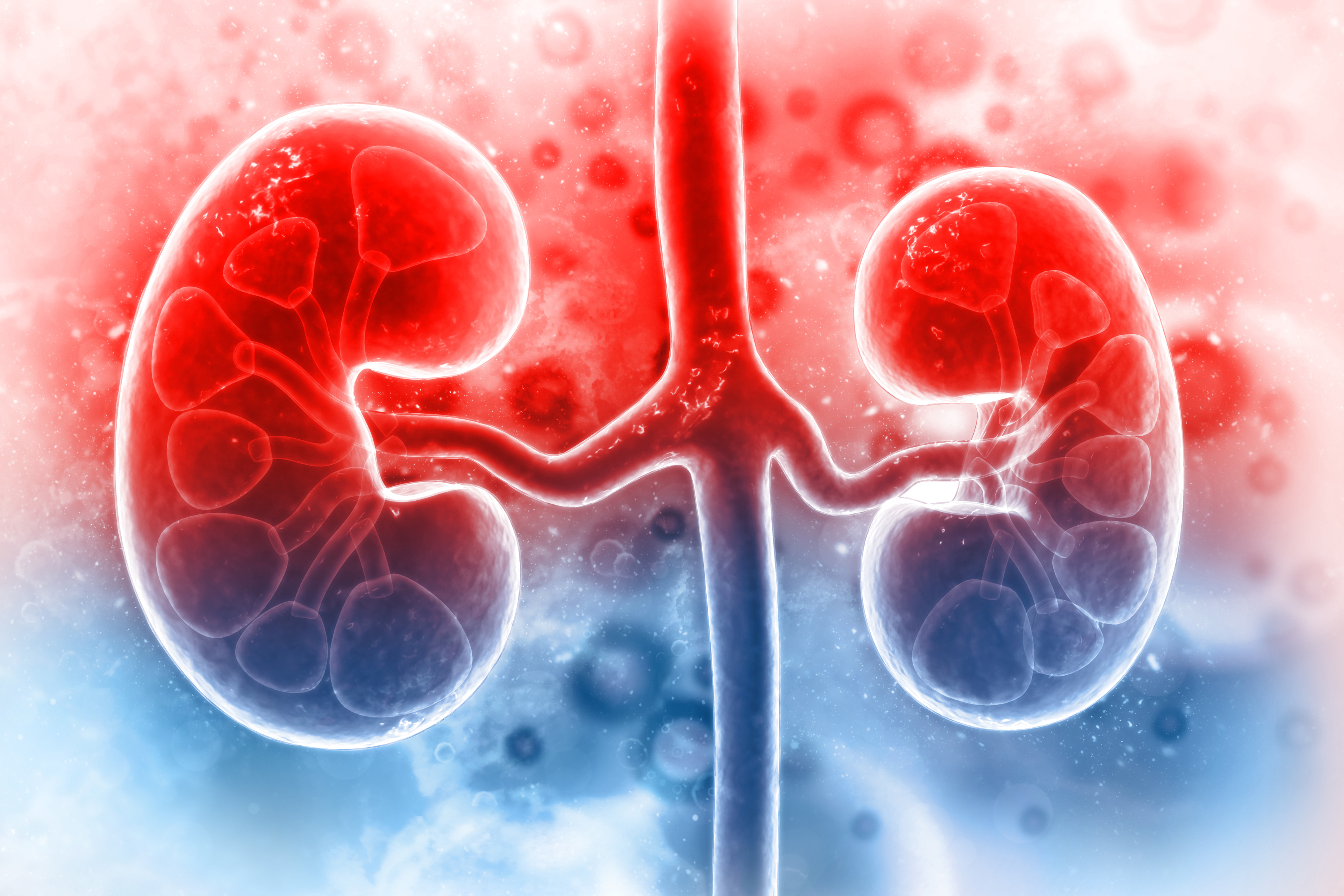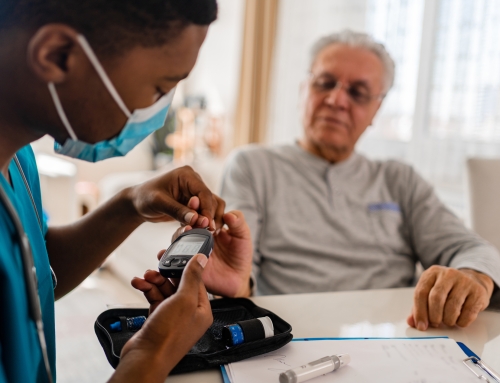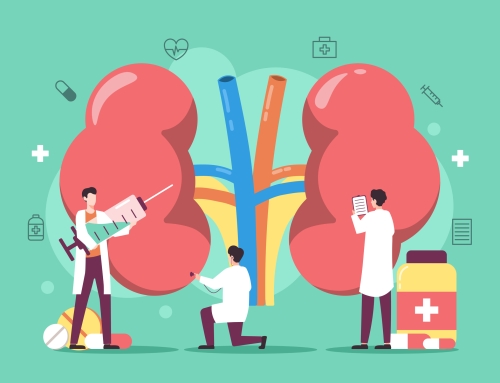It is estimated that more than 31 million American adults have chronic kidney disease (CKD). However, a survey done by the National Medical Association and Amgen shows that most adults know very little about the symptoms or treatment of the disease.
How can people be so unaware of a disease that affects so many? Like diabetes and high blood pressure, chronic kidney disease is called a “silent killer” because there are few symptoms and by the time a person realizes they have a problem, much damage has already been done.
By sharing information you can help save lives. Because chronic kidney disease happens over time, creating awareness and encouraging people to get their kidney function checked regularly may give them the opportunity to slow the progression of the disease and perhaps even prevent kidney failure. It’s time to spread the word about kidney disease.
How do normal kidneys function?
To understand how chronic kidney disease can go unnoticed, let’s take a look at how normal kidneys function and then learn how efficiently they can work even when they are damaged.
Most people are born with two kidneys. The kidneys are about the size of a closed fist. They are located in the middle back above the waist, with one on each side of the spine. The right kidney is a little lower and smaller to make room for the liver.
Most people think that the kidneys are only responsible for making urine, but there are more functions of the kidneys that affects many areas of the body.
A health kidney is responsible for:
- cleaning the blood
- producing urine
- regulating blood pressure
- balancing fluids, minerals and chemicals in the body
- signaling the bones to make red blood cells
Healthy kidneys process all of the body’s blood supply every five minutes. On a daily basis healthy kidneys filter the blood, removing toxins from the bloodstream and turning it into urine that will be excreted from the body. In addition, the kidneys release renin, which is an enzyme that regulates blood pressure. The kidneys also decide when to hold on to or delete fluids, minerals and chemicals in the body to keep levels balanced and healthy. Another task of the kidneys is to signal the release of erythropoietin, a hormone that tells the bones to create red blood cells.
What is chronic kidney disease (CKD)?
Each kidney has about a million incredibly tiny filters called nephrons. A nephron is made up of a glomerulus and tubules. The nephrons filter blood. When they become damaged, the kidney becomes less efficient at doing its many jobs. Chronic kidney disease occurs when the nephrons are damaged or destroyed. Over time, as fewer nephrons are available to clean the blood, the kidneys are diseased and less able to keep the body healthy.
Who is affected by chronic kidney disease (CKD)?
Some people are more prone to getting chronic kidney disease. People with diabetes or high blood pressure should be aware of their risk of developing kidney disease, as these are the top causes of CKD. When diabetes and high blood pressure are not controlled, they can cause damage to the tiny vessels throughout the body, including the nephrons in the kidneys. Uncontrolled high blood sugar and high blood pressure cause the nephrons to become damaged or destroyed.
More and more studies have shown that there is a link between obesity and chronic kidney disease. Obesity increases a person’s risk for diabetes and high blood pressure, which are the leading causes of chronic kidney disease. Recent trends show that increases in the number of young people with Type 2 diabetes can be attributed to obesity. Because people are getting diabetes at an early age, the odds are greater that they will get kidney disease. Chronic kidney disease progresses over many years, but if someone starts to lose kidney function in their teens and it goes undiagnosed, by the time the person is in their thirties or forties, they may progress to end stage renal disease and require dialysis.
Those with a family history of kidney disease are also at increased risk of developing chronic kidney disease. In addition to being at greater risk for diabetes and high blood pressure, which can run in families and progress to kidney disease, there is a hereditary kidney disease called polycystic kidney disease (PKD). PKD is passed from one or both parents to their children. With polycystic kidney disease, fluid-filled cysts grow on the kidneys and can impede their ability to function.
Glomerular diseases are the third leading cause of kidney disease. These diseases cause damage to the glomeruli in the nephrons. Glomeruli are the plural of glomerulus. A glomerulus a series of capillary loops that are semipermeable and act as a filter where blood goes through and fluids and waste are filtered out to be processed into urine. Two examples of the most common glomerular diseases are glomerulonephritis, which is an inflammation of the glomeruli, and glomerulosclerosis, which is when the glomeruli become hard. When the glomeruli become inflamed or harden, they are no longer able to filter blood or send the waste products to become urine.
When enough of the glomeruli in the nephrons are destroyed, chronic kidney disease can lead to end stage renal disease (ESRD) or kidney failure. It is at this point that either dialysis or a transplant is needed.
What are the risk factors of chronic kidney disease?
Because chronic kidney disease happens over time, it is important that those at risk be diagnosed early so they can take steps to help prolong their kidney function and hopefully prevent end stage renal disease (ESRD) or kidney failure. The following signs, symptoms and conditions indicate that it would be a good idea to visit a doctor and ask for a kidney check:
- diabetes
- high blood pressure
- family history of kidney disease
- changes in urination including:
- going more frequently or less often
- color becoming darker
- foamy or bubbly
- feeling tired
- feeling weak
- feeling cold all the time
- shortness of breath
- swelling in face, feet or hands
- nausea or vomiting
- loss of appetite
- metallic taste in the mouth
- not wanting to eat meat
- mental confusion
What can be done to help prolong kidney function and prevent kidney failure?
While each person is different, there are recommended steps that can be taken to help someone with chronic kidney disease prolong their kidney function. When someone is diagnosed with chronic kidney disease, the first step is to determine the stage of the disease.
The National Kidney Foundation has classified five stages to help doctors better treat their patients based on how much kidney function the patient has left. Measuring a person’s glomerular filtration rate (GFR) indicates how much blood is being filtered through the kidneys. The five stages of chronic kidney disease are defined as followed:
Stage 1: GFR > 90 milliliter/minute is CKD with normal or high GFR
Stage 2: GFR = 60-89 ml/min is mild CKD
Stage 3: GFR = 30-59 ml/min is moderate CKD
Stage 4: GFR = 15-29 ml/min is severe CKD
Stage 5: GFR <15 ml/min is end stage renal disease (ESRD) or kidney failure
After determining a patient’s stage of CKD, a doctor will prescribe the best treatment for them. During the first two stages of kidney disease a doctor may recommend limiting protein in the diet, controlling blood sugar and blood pressure levels, stopping smoking, exercising and practicing overall healthy habits.
In stage three of chronic kidney disease a visit to a nephrologist (doctor who specializes in kidney care) is recommended. In addition to following the advice given for people in stages one and two, the nephrologist may also refer the patient to a dietitian for additional guidance in getting proper nutrition. Some people begin to feel some of the effects of kidney function loss in stage three.
By stage four people with kidney disease usually visit their nephrologist every three months for testing. During this stage the nephrologist will explain the treatment options for kidney failure, including dialysis and transplantation. If the patient will be on dialysis, the doctor will explain the different types of dialysis treatments available such as hemodialysis and peritoneal dialysis, and prepare for the patient to get an access—local where dialysis occurs.
For hemodialysis the access allows the blood to come out of the body to be cleaned and then put back into the body. The best access choice is a fistula, which should be placed a few months before dialysis treatment begins. For peritoneal dialysis, the catheter is placed in the abdomen to allow for dialysate to go into and out of the peritoneal cavity, which acts as a filter in place of the kidneys.
At stage five the kidneys no longer function well enough to keep a person alive, so dialysis or a transplant must be done.
What should I tell people about kidney disease and dialysis?
If you have chronic kidney disease or are on dialysis, it is your personal choice whom to tell. One of the benefits of talking about CKD and dialysis is that it helps to educate family, friends, coworkers and neighbors about the disease. Creating CKD awareness can help people understand what you are going through and may help you deal with the disease better through sharing the experience. Telling others about CKD also makes them aware that they should be tested.
Because Medicare pays for dialysis treatment for those who do not have private insurance, kidney disease is also a political issue. From time to time there is important legislation that affects people with chronic kidney disease. By educating yourself on the issues and sharing your knowledge, you and your fellow citizens can help influence lawmakers to vote in favor of kidney patients.
Since there are so many people who are unaware of kidney disease and its risk, the best way to help make them aware is to talk about it. Whether you tell people how you feel, what dialysis is like, the difficulties of the dialysis diet or recommend they talk to their doctor about their own kidney function, you become an advocate for millions of kidney patients.




